Korean City Known for Its Cheese?!
the story of a Catholic Priest who gave birth to the Korean cheese industry
(I’ve written a whole separate posting entitled “K-urb Your Enthusia-Jm” alerting you to the increasing number of unpleasant things in both countries I visited. But I decided not to publish it because it sounded whiny, and the bad experiences might have been just bad luck and not extraordinarily out of the norm. However, I would advise you to, do temper your expectations when you go and watch out for certain rude people.)
When you think of Los Alamos, New Mexico, what is the first thing that comes to your mind? Oppenheimer and nuclear testing? Sure. How about Bordeaux, France? Wine. Oxford and Cambridge in UK? The Universities.
If you think about it, there are not that many cities/towns that can claim something like this. Something that is synonymous with the city’s identity.
When you ask any Korean, “what is the town of Im-shil (임실) famous for?” 99 out of 100 will say, “cheese.”
Im-shil is a county (군, guhn) in North Jeolla Province (전라북도), about 144 miles (232km) south of Seoul. Its population is about 30,000, and its name doesn’t show up on zoomed out maps such as the above. It is a small county by any measure, and further divided into sub-districts. You can almost say that it’s really nowhere important.
But most Koreans know it as the cheese capital of South Korea. As you may well know, Korea is not exactly known for its dairy products. Milk, okay, but processed products like cheese, butter, and yogurt? Not exactly Korea’s strong suit.
Nonetheless, this rather small town of Im-shil has made a name for itself because of its cheese industry. It’s even got its own Cheese Themepark.
There was NO cheese industry, period, in Korea until a Catholic priest named Ji Jeong-hwan (지정환) started making cheese from goat milk in the early 1960s. That ultimately failed but after learning the techniques of cheesemaking from European countries, he finally succeeded in producing camembert (of all cheeses), Korea’s first cheese in 1969.
And as they say, the rest is history. Im-shil became the center of cheesemaking in Korea. End of this story? Not quite. This is only the beginning. Let’s back up a little bit.
Again, this is the Cheese Themepark in Im-shil (same picture from above), supposedly built to the architectural styles of Appenzell, Switzerland, where Appenzeller cheese is made.
1 says, “맛있는 치즈” = Delicious Cheese. 2 says, “웃음꽃 피자.” This is a wordplay on the word “피자.” It’s pizza—that’s how they spell it in Korean, in obvious reference to the mozzarella they produce. But, it also means in Korean, “let (something) blossom or bloom.” So, “웃음 (smile, laughter) 꽃 (flower) 피자” means something like, “let the flowers of laughter blossom.”
3 is Ji Jeong-hwan (지정환), the “father” of cheese industry in Korea and the real subject of this posting.
His birth name is Didier t’Serstevens, a Catholic priest from Belgium who came over to Korea in 1960 for missionary work in the country still reeling from the war and poverty. He spent the rest of his life in this very rural area developing and growing a thoroughly foreign concept to poor farmers until he passed away in 2019 at the age of 87.
First, let’s talk about his name. His Korean name was given to him from a senior Korean priest at the time of his assignment in 1960, Kim Ih-hwan (김이환). Fr. Kim took “Di” from Didier and turned it into Ji—there’s no Korean last name Dih, but there is a Ji (지, 池). And Jeong (正) is of “justice” character and Hwan (煥), from Fr. Kim’s middle name, is of “(shine) brightly” character. You can easily discern what the name was supposed to signify. In 2016, the Korean government officially recognized Fr. Ji Jeong-hwan as the founding progenitor and 1st generation of Im-shil Ji. (please click on the link for further explanation of this last name thing).
The story of Fr. Ji is nothing short of someone who’s worthy of being called a saint. In seeing how poorly the people lived at the time of his arrival in Korea, he helped farmers with land reclamation projects, only to see it essentially stolen by other big landowners. Not giving up, he borrowed $2,000 from his wealthy parents (still must have been a big chunk of money back then) to establish a cheese factory to try to develop a new source of income for them. After years and years of trying and studying, he was finally able to produce a marketable cheese for the first time in Korea.
Fr. Ji subsequently sought to obtain permit for his production facility from the Ministry of Agriculture, and true to a desk-job government official form, the Deputy Minister denied it opining, “cheese industry will not succeed in Korea.” And true to a man-on-a-mission form, Fr. Ji worked tirelessly to promote it. Apparently, the quality of the cheese was at such a high level that many of the top hotels in Seoul and other imported food products retail stores started purchasing from him.
He went on to incorporate the Im-shil dairy products co-op and transferred all the ownership and intellectual property rights to the people of Im-shil. Starting to suffer from Multiple Sclerosis, he went back to Belgium for rest and treatment in 1981, only to return 2 years later to do more charitable work for the disabled until his death.
His funeral was attended by more than 1,000 people, and there is a famous backstory of Fr. Ji’s last wishes. One that is hard not to get emotional over it. Fr. Ji wanted, at his funeral, everyone to sing his favorite Korean pop song, “만남 (mahn-nahm)” for him. The word means, “encounter, or meeting someone new” but it has deeper connotations to it. It’s “starting a relationship,” and “human interaction” all rolled into one. And the lyrics suggest strong Buddhist influence about how human relationships never occur by chance and that it was always meant to be.
The lyrics:
우리 만남은 우연이 아니야 / 그것은 우리의 바램이었어 / 잊기엔 너무한 나의 운명이었기에 / 바랄수는 없지만 영원을 태우리 / 돌아보지 마라 / 후회하지 마라 / 바보같은 눈물 보이지 마라 / 사랑해, 사랑해 너를 / 너를 사랑해
Our mahn-nahm wasn’t accidental / It was our mutual wish / It was my desperate fate that wasn’t to be forgotten / (…too much poetic license and not translatable…) / Do not look back / Do not feel sorrow / Do not shed silly tears / I love you…
The message Fr. Ji, who spoke perfect Korean (he apparently studied Korean at University College London for 1 year before he came to Korea), was trying to convey to people is abundantly clear. I’m not a religious person but I can’t think of anyone who’s led a more angelic life.
** note about the song itself: No one knew about this song when it was released in 1989, but it became the biggest hit song of 1991 and gave the singer all sorts of end-of-the-year awards.
This a short YouTube clip of a TV quiz/talk show. In this episode, the singer of 만남, Noh Sah-yon (노사연) was the guest. The final question of the day was, when Fr. Ji passed away, what did he wish for at his funeral? And all the panel members had to guess what that was. When they finally arrive at the answer, you can see their reactions. Start watching from about 0:40 mark and on for the crowd actually singing 만남 (about 2:00 mark).
How many lives do you think he has touched over the years? Not just touch, but also enrich? All the while he’s making nothing from it and suffering from the debilitating MS.
He rests at the Catholic Cemetary of Jeonju, a big city near Im-shil.

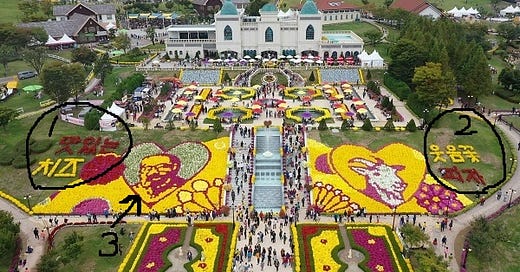



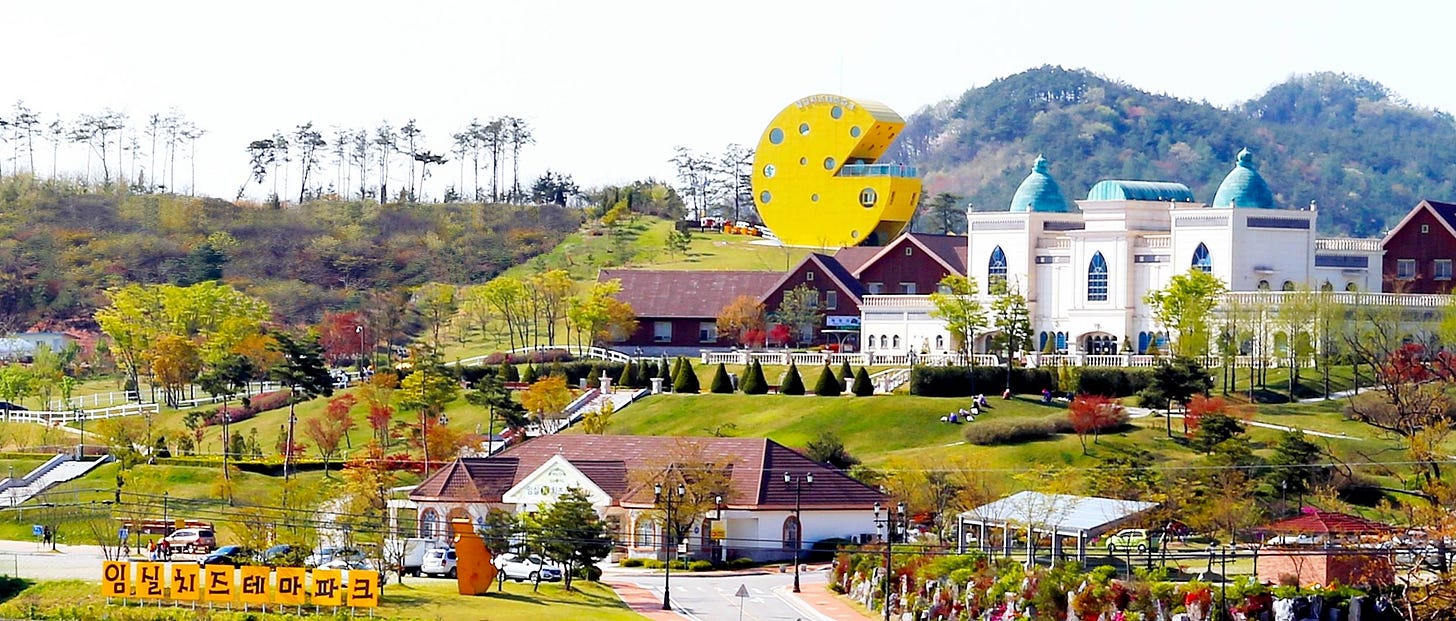
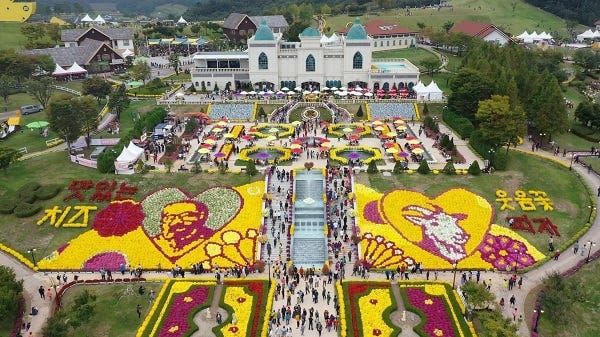
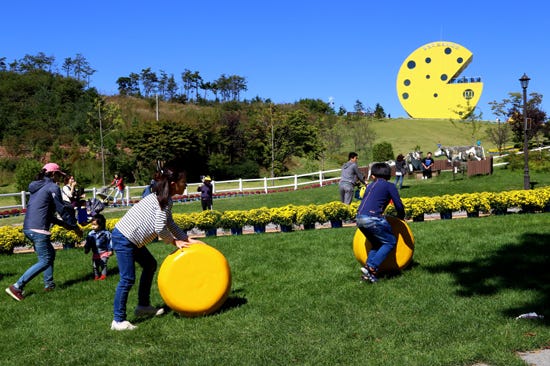

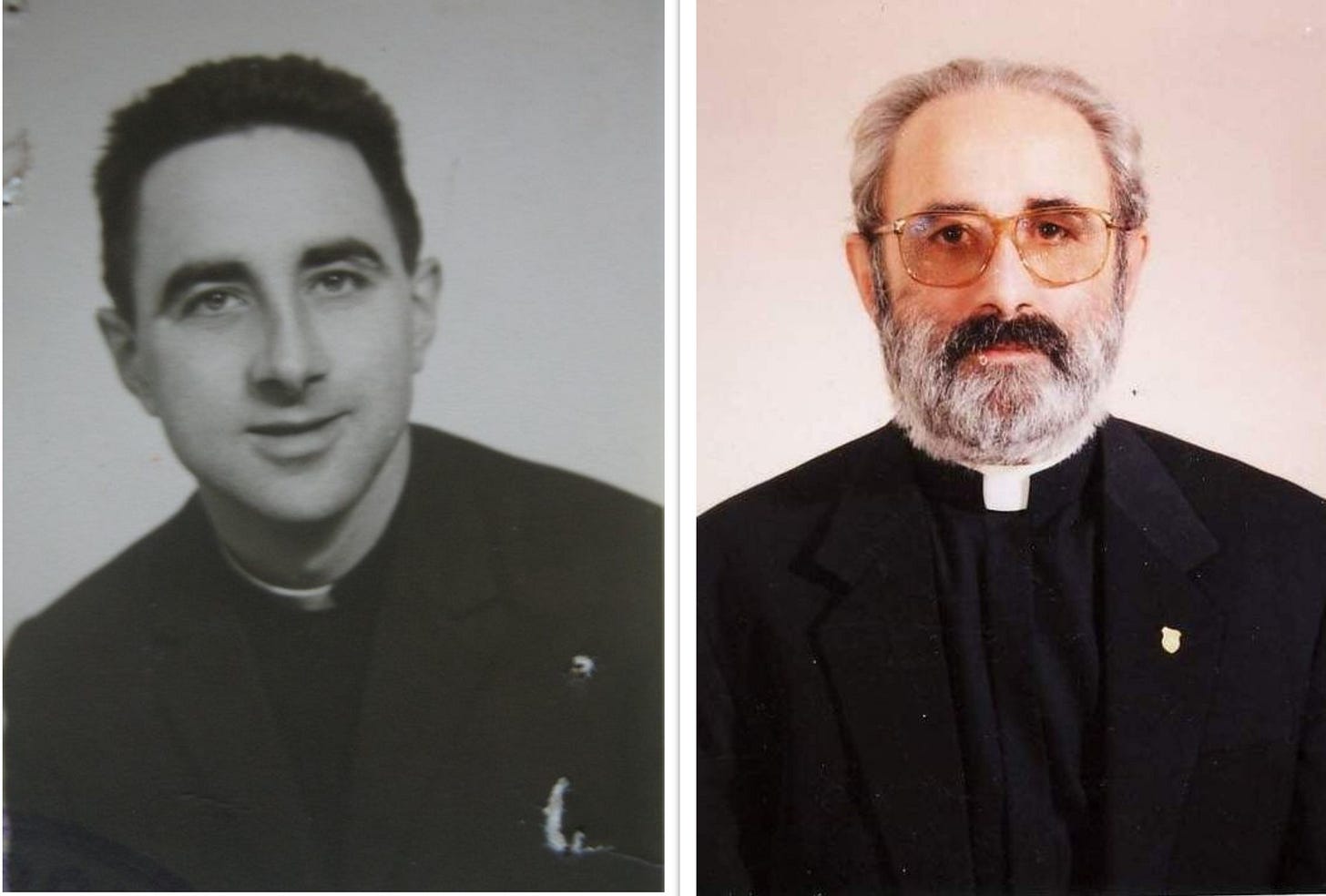
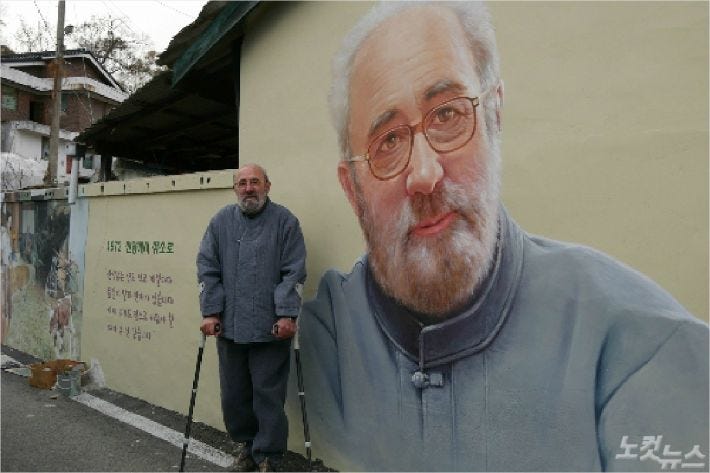
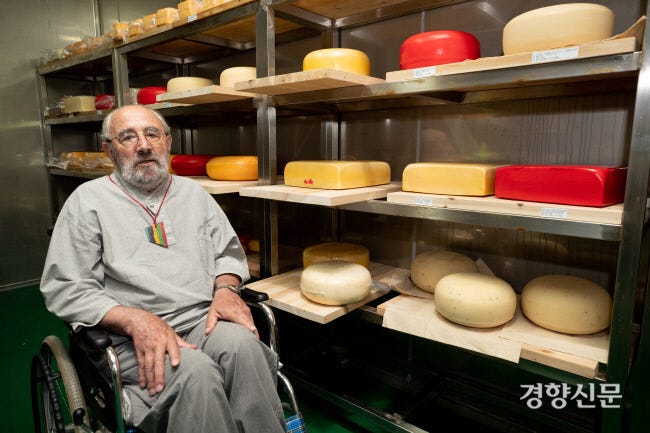
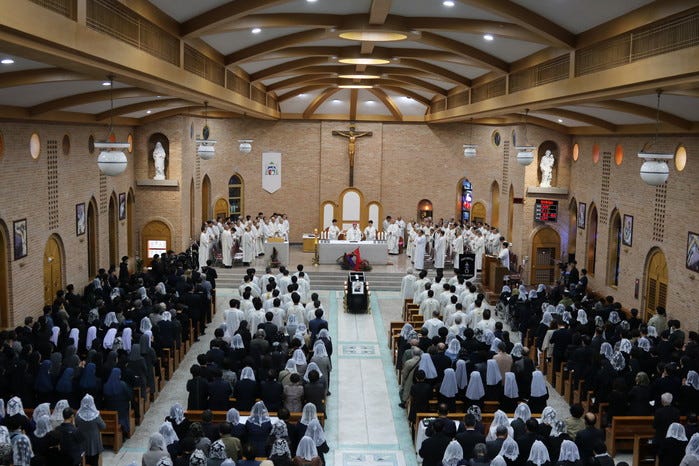
![향토 프랜차이즈를 찾아서] 2. 지정환 임실치즈피자 - 전북도민일보 향토 프랜차이즈를 찾아서] 2. 지정환 임실치즈피자 - 전북도민일보](https://substackcdn.com/image/fetch/$s_!v0HU!,w_1456,c_limit,f_auto,q_auto:good,fl_progressive:steep/https%3A%2F%2Fsubstack-post-media.s3.amazonaws.com%2Fpublic%2Fimages%2F54db2d91-bfc9-446f-b79b-dd36c6ff9af0_600x358.jpeg)
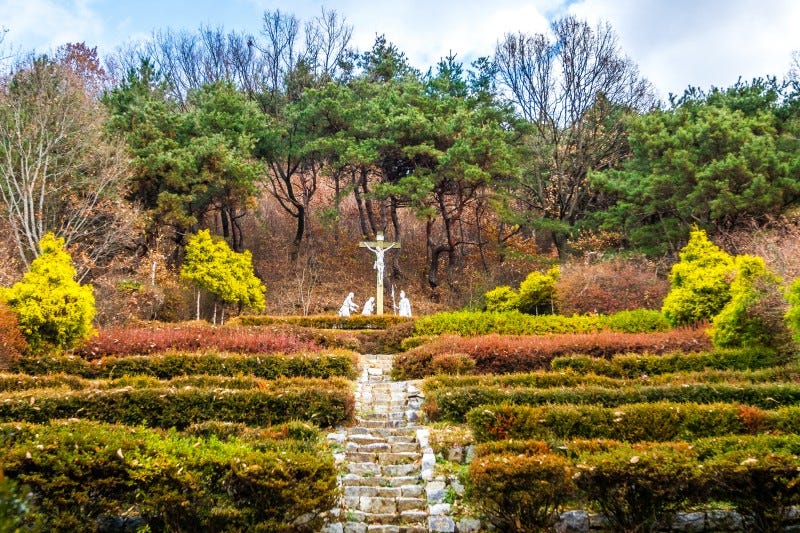
I will visit this place seems like a hidden treasure ! You should write about another hidden treasure (if you haven’t already) the German village on Namhee island, I visited Sacheon nearby and my friend brought me there and it was super cool and I never expected it to be there a fully fledged German village in South Korea !!!! you can explain the history of Korean minors in Germany as well of course !
This was a good and interesting read. I might have to make a trip to this town.